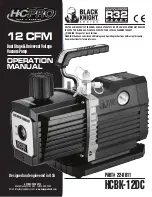
Demand Duo
™
R
-
Series Installation and Operation Manual
14
Door
**6 in. Min.
0 in.
Min.
0 in.
Min.
0 in.
Min.
*12 in.
Min.
Location
Clearance
Top
12 in.
*Clearance for servicing
the anode rods is 54 in.
from the top of the water
heater.
Sides
0 in.
Back
0 in.
Front
6 in.
**Clearance for servicing
is 24 in. in front of the
water heater.
Intake Filter Exhaust
Connector (IFEC)
6 in.
Single Wall B
-
Vent
I
f you install this water heater in an area that is
known to have hard water or that causes scale
build
-
up, the water must be treated and may
require a more frequent flushing schedule.
When scale build
-
up in the heat exchanger
begins to affect the performance of the water
heater, a diagnostic code
“
LC#
”
will display.
Flush the heat exchanger to prevent damage to
it. Scale build up is caused by hard water set at a
high temperature.
Rinnai offers Southeastern Filtration
’
s
“
ScaleCutter Water Conditioning System
”
that
offers superior lime scale prevention and
corrosion control by feeding a blend of control
compounds into the cold water supply.
Air surrounding the water heater is used for
combustion and must be free of any compounds
that cause corrosion of internal components.
These include corrosive compounds that are
found in aerosol sprays, detergents, bleaches,
cleaning solvents, oil based paints/varnishes, and
refrigerants. The air in beauty shops, dry cleaning
stores, photo processing labs, and storage areas
for pool supplies often contains these
compounds.
The water heater should not be installed in any
areas where the air may contain these corrosive
compounds.
Do not store or use gasoline or other flammable
vapors and liquids in the vicinity of this or any
other appliance.
Flammable liquids such as cleaning solvents,
aerosols, paint thinners, adhesives, gasoline and
propane must be handled and stored with
extreme care. These flammable liquids emit
flammable vapors and when exposed to an
ignition source can result in a fire hazard or
explosion. Flammable liquids should not be used
or stored in the vicinity of this or any other gas
appliance.
Top
Bottom
Table 4: Clearances
Figure 4: Clearances















































